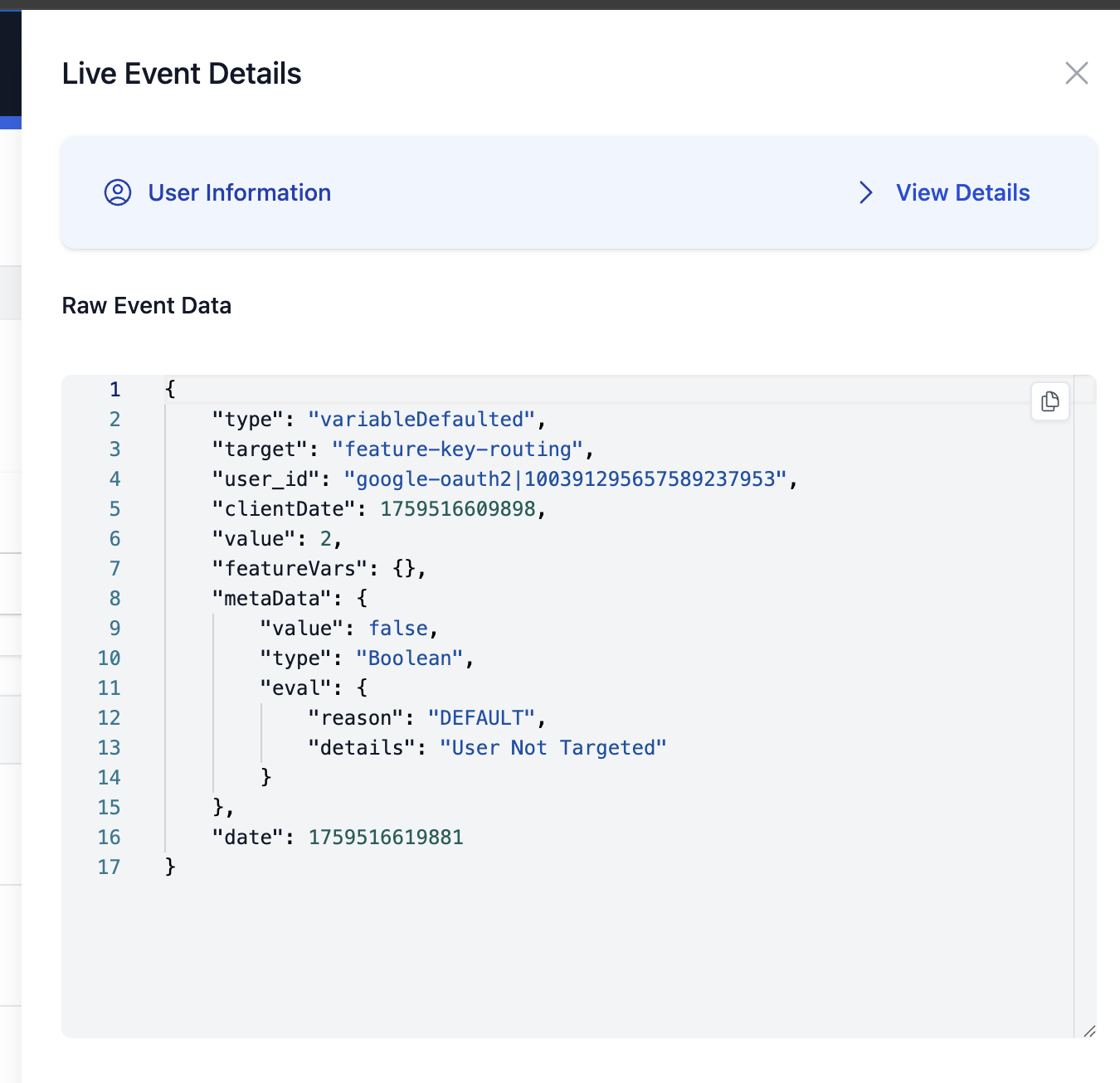Live Events
The Live Events debugging tool lets you track a user's SDK events as they happen in real-time. It helps to quickly verify that your implementation is working correctly and if you're seeing the results that you intended to.
Why use it?
- Confirm that your SDK is initializing correctly.
- Ensure that your Variables are being evaluated or defaulted as expected.
- Verify that your Custom Events are being tracked accurately.
Usage
To start listening to live events, input a User ID or use your DevCycle Identity to listen to their events.

Press the Start button to start listening to your specified user's events. Once started, events will populate as they come through for 5 minutes before the connection automatically closes. You may also manually stop and reset the connection at any time.
Results
The results display a stream of events triggered by the SDK you’ve installed.
Each event includes the following details:
- The Event Type - e.g. User Configuration, Variable Evaluated, Variable Defaulted, Custom Event Type.
- The Environment the event was triggered on.
- The Variable key or the Event Target, depending on the Event Type.
- The Variable value or the Event Value, depending on the Event Type.
- The Evaluation Reason.
You can filter the events further by Environment, Platform, and Event Type.

Click View Details to see the full user object that triggered the event, along with the raw Event data.

Event Types
| Event Type | Description |
|---|---|
| variableEvaluated | Triggered when a Variable is successfully evaluated. Shows which Variable key and value were returned, along with the evaluation reason. |
| variableDefaulted | Triggered when a Variable evaluation fails and a default value is returned. Useful for identifying misconfigurations or missing SDK contexts. |
| customEvent | Triggered when a Custom Event is tracked by the SDK (e.g., clicks, conversions, or other user actions). |
| userConfig | Triggered when the SDK fetched a config for the user. This could be on initialization, or due to a real-time update or a change in user properties. |